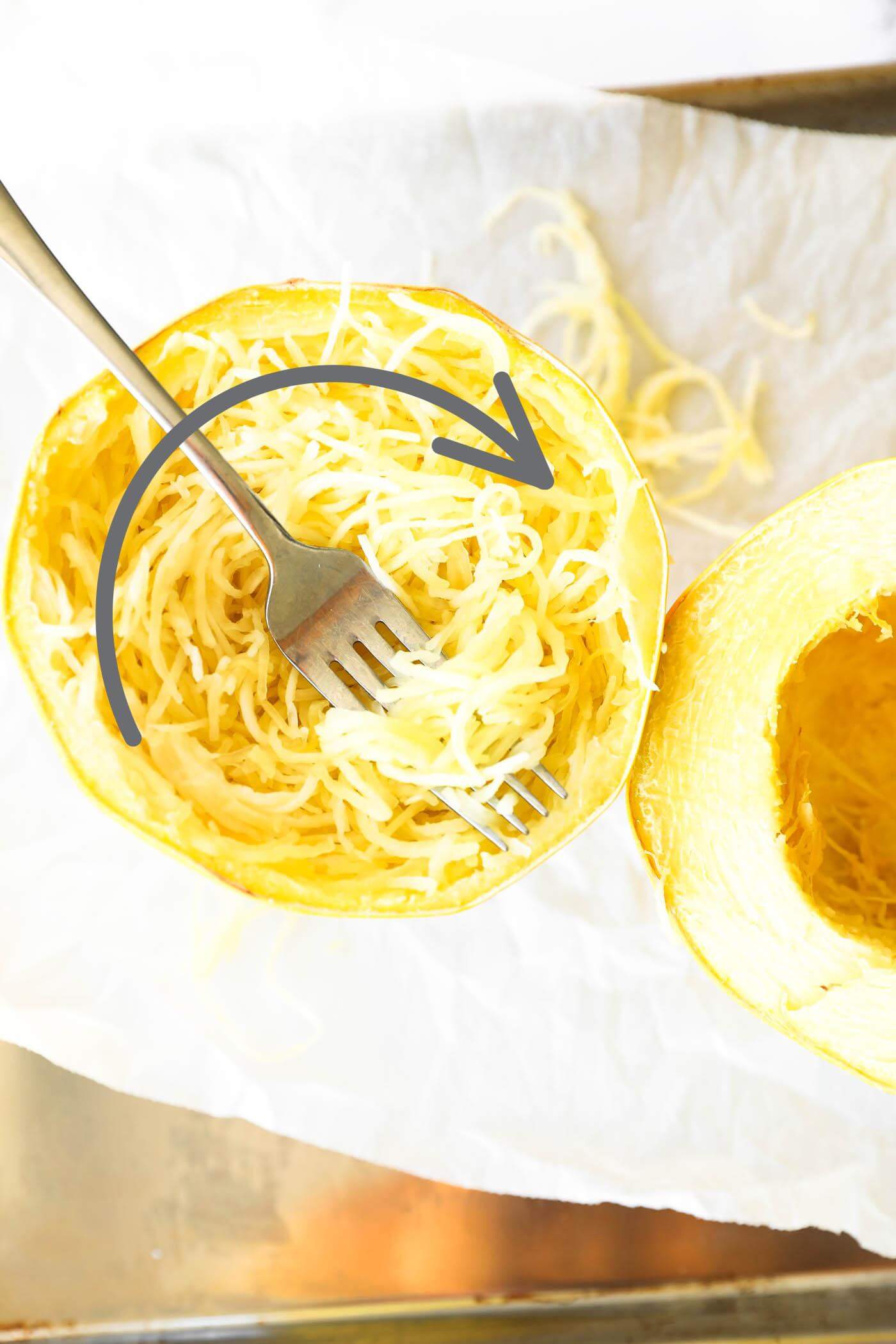Don’t Overcook! You know spaghetti squash is done when the flesh of the squash is fork-tender inside, the outsides are turning golden, and when you press on the outside of the squash, it gives a little. If you overcook the squash, it will be mushy.

Tips For Avoiding Mushy, Watery Noodles
It’s easy to end up with mushy spaghetti squash noodles. Here are some tips to avoid this!
- Don’t overcook them – This is the #1 reason that noodles become a mushy, watery mess! Stick to the times noted above and don’t allow the squash to become soft to the touch. It will still feel hard when it’s cooked.
- Don’t cook them twice – A lot of recipes will call for cooking the squash to get noodles and then baking the noodles again. Make sure you are only warming up the noodles with the other ingredients, not cooking them for another extended period of time.
- Add cooked noodles into recipes at the very end – if you’re going to be eating them with anything else that’s warm, simply toss the cooked noodles with the rest of the warmed up ingredients.
- Strain them – If you do end up with softer noodles, you can let them sit in a colander for 10 minutes to remove some of the water.
How to cut spaghetti squash
It’s counterintuitive, but you should cut spaghetti squash crosswise for the longest noodles. See the pictures below.


As noted in the above, the spaghetti squash strands grow around in a circle that follows the round shape of the squash. So, if you cut it lengthwise, you are cutting the noodles in half.
Cutting tip: Using the sharp tip of your knife, poke it through the skin. Apply pressure to slide the knife into the flesh and slowly work your way around the squash crosswise until it is in two pieces.
HOW TO COOK SPAGHETTI SQUASH | easy roasted spaghetti squash recipe
FAQ
Why is my spaghetti squash mushy after cooking?
Is spaghetti squash supposed to be crunchy when cooked?
